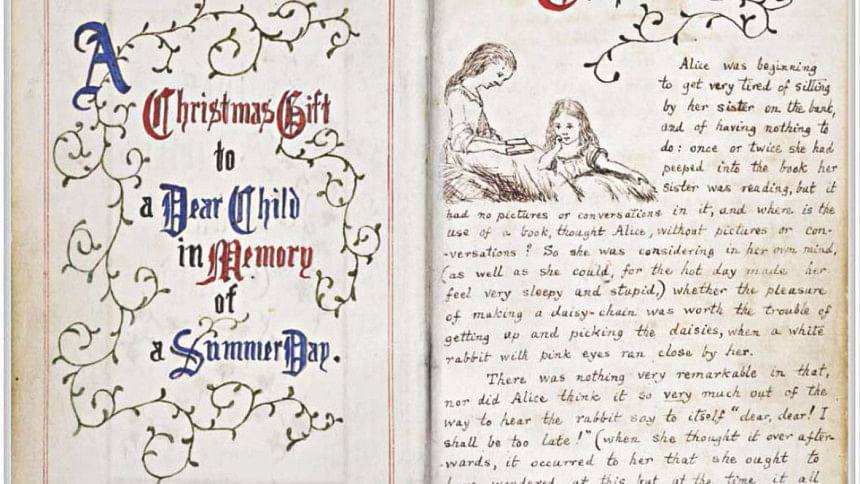150 Years of Alice and Wonderland
On the afternoon of July 4, 1862, two Oxford Dons, Charles Dodgson and Robinson Duckworth, went on a boat ride up the River Isis, a tributary of the Thames. Three sisters – Lorina, Alice, and Edith – accompanied them. They were the daughters of Henry Liddell, then Dean of Christ Church College, and later Vice Chancellor of Oxford.
Alice became restless. She kept pestering Dodgson, 'Tell me a story.' 'No. Not this time. Next time,' Dodgson replied. The three sisters united, 'It is the next time!' The boat trip would end at Godstow, four miles from where they started. Duckworth was getting tired of rowing. Dodgson, who would soon become Lewis Carroll, saw some rabbits. He looked at Alice. Then he noticed that one of the rabbits fell down a hole. The passengers, young and old, were transported to a 'place like no place on Earth; a land full of wonder, mystery and danger.'
After they returned to Oxford, Alice pleaded. 'Please Mr Dodgson. Would you write the story down for me?' Carroll did. He painstakingly handwrote the manuscript in a journal. To make the reading imaginative, he drew pictures. He practiced each page and each drawing more than once before writing in the journal. In November 1864, Lewis Carroll gifted Alice the handwritten manuscript as his 'Christmas Carol', with a dedication, 'A Christmas Gift to a Dear Child in Memory of a Summer Day.' What was the story? Alice's Adventures Underground.

Carroll decided to print Alice's Adventures. He presented it to the writer George MacDonald for approval. Mrs MacDonald read the story to their children. The toddlers would be enthralled each time they heard their Mother read. Mr MacDonald advised Carroll to make the story longer. In came the Mad Hatter and the Cheshire Cat. Carroll persuaded John Tenniel of Punch to do the illustrations. In 1865, Alice's Adventures in Wonderland was published. One hundred and fifty years later, we still wonder if Wonderland 'is impossible, and then tell ourselves, 'only if we believe it is.'
Alice and Wonderland is a children's story unlike any other. There are two Alice's in Wonderland. The first is the little Alice to whom Carroll tells a story. Little Alice finds herself in an adult's world that makes no sense. The other Alice is Carroll himself. After enjoying a childhood full of freedom with his seven sisters, Carroll finds himself at Oxford, which in Victorian times demanded strict order from its teachers, which made no sense to Carroll's childhood. Carroll was a mathematician. Thus with logic, math and imagination, he portrays Alice and Wonderland to a child, and unknowingly to himself, too.
Carroll's adult friend Duckworth was rowing that day. It was very hot. Carroll needed to keep the story amusing to all the passengers. May be, this is why Alice and Wonderland appeals to both children and adults with sense that's actually non-sense.
In the end, you ask yourself: Was Wonderland a dream or was it real? 'If it was so, it might be; and if it were so, it would be; but as it isn't, it ain't. That's logic.' Surely, you can't go back to your childhood in reality. Like Carroll and Alice you were a 'different person yesterday.' There is a way of going back, though. 'Imagination is the only weapon in the war against reality.'
Who cares if our reality is different from others and that everybody in Wonderland is mad! We're 'already late' for the Mad Hatter's Tea Party. Down the Rabbit Hole! Off to Wonderland for another 150 years and more.
Asrar Chowdhury teaches economic theory and game theory in the classroom.
Outside he listens to music and BBC Radio; follows Test Cricket; and plays the flute. He can be reached at:
[email protected]

 For all latest news, follow The Daily Star's Google News channel.
For all latest news, follow The Daily Star's Google News channel. 



Comments